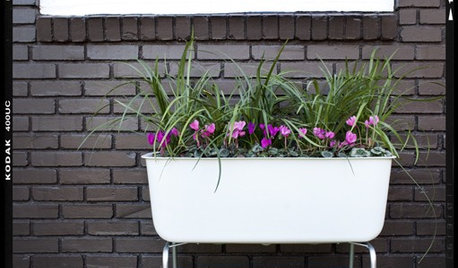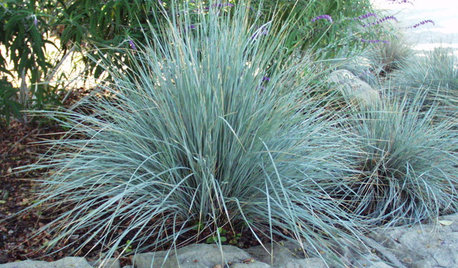Container tomato blues
greensingh
14 years ago
Related Stories

LIFEKitchen Traditions: Tomato Season Meets a Family Legacy
Somewhere a Sicilian great-great-grandmother is smiling at a bowl of American-made sauce
Full Story
ARCHITECTUREHouzz Tour: Fresh Ideas in a Former Tomato Packing Shed
A formerly metal-clad structure is now a beautiful wood home designed to capture the light and preserve open space
Full Story
COLOR10 Reasons to Make a Splash With Tomato Red
You won’t duck at these tomatoes. See how bold red shades can play up architecture, light up a dark spot and add drama
Full Story
EDIBLE GARDENSSummer Crops: How to Grow Tomatoes
Plant tomato seedlings in spring for one of the best tastes of summer, fresh from your backyard
Full Story
CONTAINER GARDENS7 Deer-Resistant Flowers for Your Summer Containers
Grow these as protection for edibles or just for their colorful beauty — deer might not like them, but everyone else will
Full Story
GARDENING AND LANDSCAPINGDIY Project: Mobile Container Garden
Get your garden going anywhere with a planter on wheels
Full Story
CONTAINER GARDENSChoose Complementary Colors for Dazzling Container Gardens
Red and green, purple and yellow, and blue and orange are opposing pairs that work in perfect harmony
Full Story
BLUE AND GRAY FOLIAGEGreat Design Plant: Blue Oat Grass
For soothing coolness in a garden or container, this evergreen grass is the low-maintenance and hardy choice to know
Full Story
FARM YOUR YARDHow to Grow Vegetables in Containers
Get glorious vegetables and fruits on your patio with a pro’s guidance — including his personal recipe for potting mix
Full Story
FARM YOUR YARD10 Easy Edibles to Grow in Containers
These herbs, vegetables and fruits are just as happy in a pot as they are in the ground
Full StoryMore Discussions









flyingfish2
greensinghOriginal Author
Related Professionals
Otsego Landscape Architects & Landscape Designers · Harvey Landscape Architects & Landscape Designers · Middletown Landscape Contractors · Cedar Hill Landscape Contractors · Cockeysville Landscape Contractors · Merced Landscape Contractors · Pomona Landscape Contractors · Pompano Beach Landscape Contractors · Rochester Landscape Contractors · Chanhassen Solar Energy Systems · Hemet Solar Energy Systems · Deltona Window Contractors · Evanston Fence Contractors · Golden Fence Contractors · Zion Fence Contractorsrnewste
opal52
justaguy2
greensinghOriginal Author
greensinghOriginal Author
justaguy2
greensinghOriginal Author
farkee
tn_veggie_gardner
justaguy2
greensinghOriginal Author
tn_veggie_gardner
greensinghOriginal Author